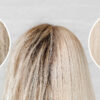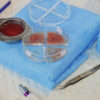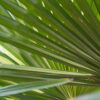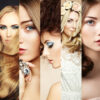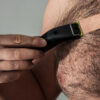Baby Hair is fine, short hair that grows along the facial hairline. They are usually thinner and curlier than the other hair on the head. They are a charming addition to a hairstyle, but for some, they can be an element that one would like to hide. Recently, however, baby hair has become a fashionable hairstyle element – especially among celebrities. However, it is worth remembering that in order for the new hair to maintain a healthy appearance and not become damaged, proper care must be implemented. So what do you need to keep in mind?
What is baby hair and where does it grow?
Baby hair is nothing more than newly growing hair on the head in place of the old ones that have fallen out. They are lost due to a number of factors – for example, by the completed life cycle, which lasts from 3 to 6 years, as a result of illness or poor diet. Although new hairs are difficult to learn at first, their emergence is a good sign. The new hairs increase the volume of the hairstyle from the root, and when they grow, they have a positive effect on the appearance, thickening the hair and ensuring a healthy appearance.
Baby hair appears most often in infants and children – in the early stages of fetal development, all body hair is fine and invisible. As time goes by, the hair on the head and face begins to grow after birth. New moose appear near the hairline on the forehead, temples and nape of the neck over a period of several months to several years. They tend to be curlier than the other hair on the head. This is due to the specific structure of the hair in this area. Those around the facial hairline grow with less keratin, which is the protein that makes up the hair. Therefore, the new hair is softer and more fragile.
Some people can see visible new hair even in adulthood. This may be related to genetic conditions or other factors affecting hair growth and structure. In adults, these hairs tend to be smaller and more subtle. It is worth remembering that the appearance of baby hair is a natural process and usually does not require any special care. Only people who want to experiment with different hairstyles and styles may experience a problem. Therefore, many people are looking for a way to style them.
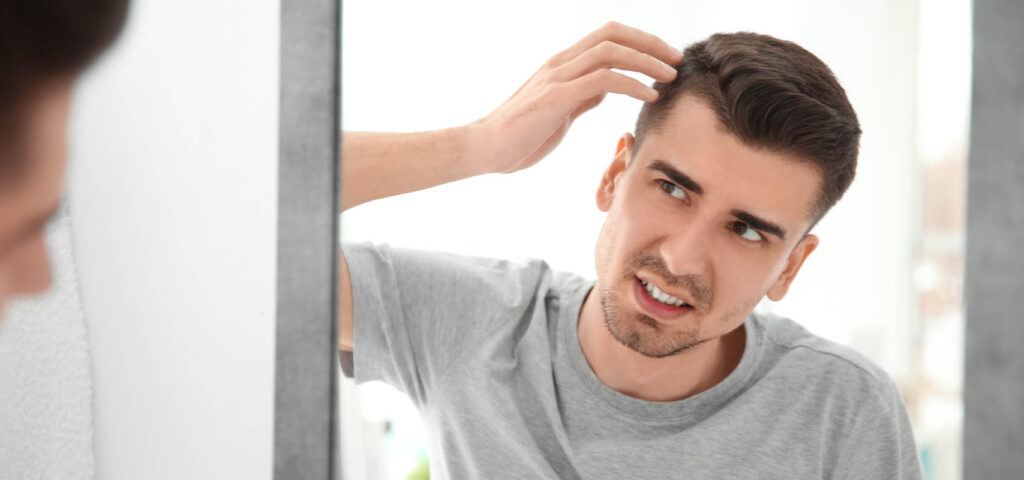
Baby hairs most often appear in areas such as:
- Forehead, which do not overgrow its entire surface – only the upper part, just below the hairline. So they can be an ideal way to visually thicken the fringe.
- The bends – occur in this area in both men and women and can contribute to the restoration of the former hairline when the bends are formed as a result of reversible hair loss.
- Neck – overgrow the upper part of it, just below the hairline. In women, they are especially visible when the hair is combed upward. They then cause the impression of being uncombed, as they grow in different directions and are short.
Sometimes baby hairs are a nuisance to style, but they should never be plucked out or shaved – even when they are a source of styling problems.
Baby hair appears on the scalp where the previous hair fell out and represents its new growth cycle. So it is a completely natural and appropriate process. When a few weeks pass, these hairs become thicker and longer, until finally they do not stand out from the head as much. Sometimes, however, you may notice a great deal of baby hair on your head – for example, after pregnancy. This is tantamount to the fact that after intense hair loss caused by hormonal fluctuations, hair begins to grow back healthily. Sometimes, however, they are lost by the handful, and new hair does not appear.
This is a cause for concern, because if the new hair does not want, then the hairstyle in a few months can significantly lose its volume and numerous clearances will appear on the head. If new hair does not grow, it is a signal that something is wrong in the body – for example, certain nutrients are missing or the thyroid gland is malfunctioning. To rule them out, it is a good idea to consult a trichologist and a dermatologist, who will recommend performing the appropriate package of tests.
How to nurture baby hair?
Care of new hair requires special attention, as it is delicate and prone to damage. Heavy brushing or combing of baby hair can cause breakage and damage. Avoid using strong styling products on them – hairsprays, gels or mousses. They are too heavy for fine hair and can weigh it down.
New hair also needs protection from the sun and other harmful external factors – wind or cold. Wearing a hat or headband on your head can help protect them somewhat. Attention should also be paid to diet to ensure that the body gets the right amount of nutrients, such as vitamins A, B, C, D and E, iron, zinc and omega-3 fatty acids. These ingredients help strengthen the hair and maintain its healthy appearance.
It is also a good idea to care for the hair and scalp from the inside. Baby hair will be helped by rubbing the right products into the scalp to nourish the hair roots. The massage performed during their application will in turn improve blood circulation to the skin. One of the more popular hair care products is hair rubs, which strengthen hair and stimulate new hair growth. However, it is important not to pluck these hairs!
When using shampoos that stimulate the roots, it’s a good idea to do so every time you wash your head. These cosmetics have active ingredients that penetrate deep into the skin, nourishing the hair follicles – this occurs when the cosmetic is foaming. However, these products should have a mild, non-drying formula. This will help retain moisture in the fibers even with frequent use.
Trichologists also recommend using scalp scrubs to stimulate new hair growth. The sebum that accumulates on the head is a combination of styling product residue and silicones. They clog the mouth of the hair follicles, resulting in less nourishment for the follicles. Thanks to proper exfoliation of dead skin cells (which is what happens as a result of scrubbing), they are better oxygenated and absorb active substances from other cosmetics. Regular trichology scrubbing is also a way to prevent the development of dandruff and inflammation of the scalp.
How to style baby hair?
If they are particularly unruly and cause a lot of trouble when styling, you can try to tame baby hair using one of the techniques of your choice. Buying a conditioner with smoothing properties without rinsing can be effective. It needs to be sprayed on the hair after washing it, making sure not to overdo it. This could weigh down the strands and cause an oily effect. Alternating with conditioner, you can use a hair mousse. However, it is worth remembering that with prolonged use there is a risk of dryness and irritation of the scalp.
The right way to care for new hair is also to oil your hair – properly moisturized and nourished hair should not be a problem. If the strands are dry and splitting, then you can apply oil to the entire length. The oiling process is carried out dry, as well as wet. However, the most popular technique is to apply the chosen oil to the hair for approx. 60 minutes. After this time, the oil is washed out of the hair. If this treatment is repeated once a week, then you will notice that the new hair will be healthy, smooth and shiny.
Will baby hair grow long?
Properly cared for baby hair can grow both long and thick. They go through 3 phases – growth, involution and rest. So it’s worth using hair growth enhancers and stimulants on a regular basis. You should also refrain from treatments that expose your hair to damage – such as straightening and curling. High temperatures have a detrimental effect on hair – especially delicate new hair, which must be handled very carefully. Be patient, because growing them to a state that matches the length of the rest of your hair will not happen overnight.
